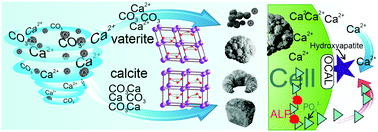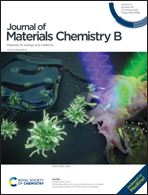Calcium carbonate particles: synthesis, temperature and time influence on the size, shape, phase, and their impact on cell hydroxyapatite formation†
Abstract
To develop materials for drug delivery and tissue engineering and to study their efficiency with respect to ossification, it is necessary to apply physicochemical and biological analyses. The major challenge is labor-intensive data mining during synthesis and the reproducibility of the obtained data. In this work, we investigated the influence of time and temperature on the reaction yield, the reaction rate, and the size, shape, and phase of the obtained product in the completely controllable synthesis of calcium carbonate. We show that calcium carbonate particles can be synthesized in large quantities, i.e., in gram quantities, which is a substantial advantage over previously reported synthesis methods. We demonstrated that the presence of vaterite particles can dramatically stimulate hydroxyapatite (HA) production by providing the continued release of the main HA component – calcium ions – depending on the following particle parameters: size, shape, and phase. To understand the key parameters influencing the efficiency of HA production by cells, we created a predictive model by means of principal component analysis. We found that smaller particles in the vaterite state are best suited for HA growth (HA growth was 8 times greater than that in the control). We also found that the reported dependence of cell adhesion on colloidal particles can be extended to other types of particles that contain calcium ions.



 Please wait while we load your content...
Please wait while we load your content...